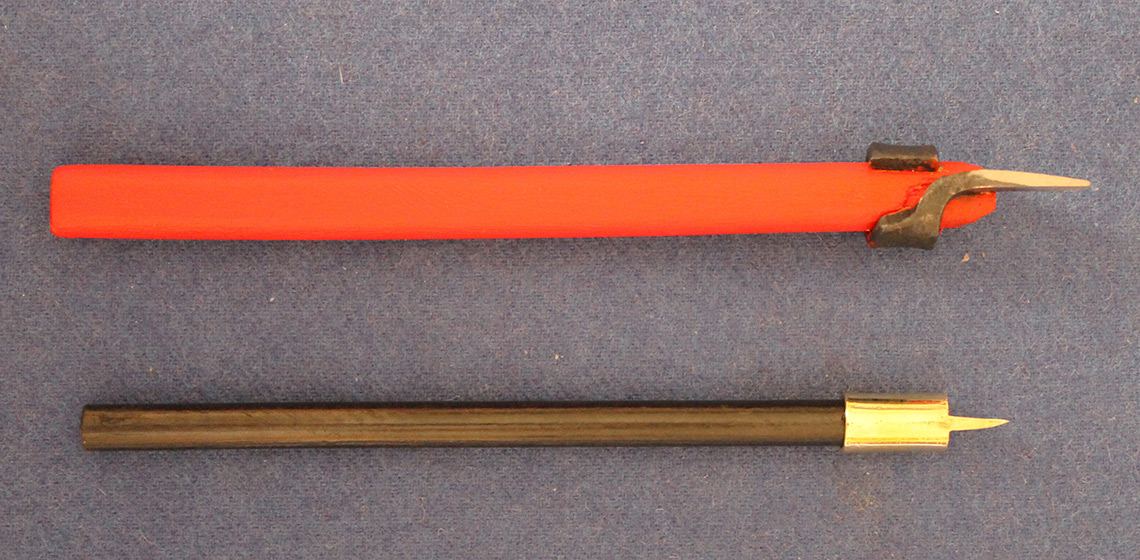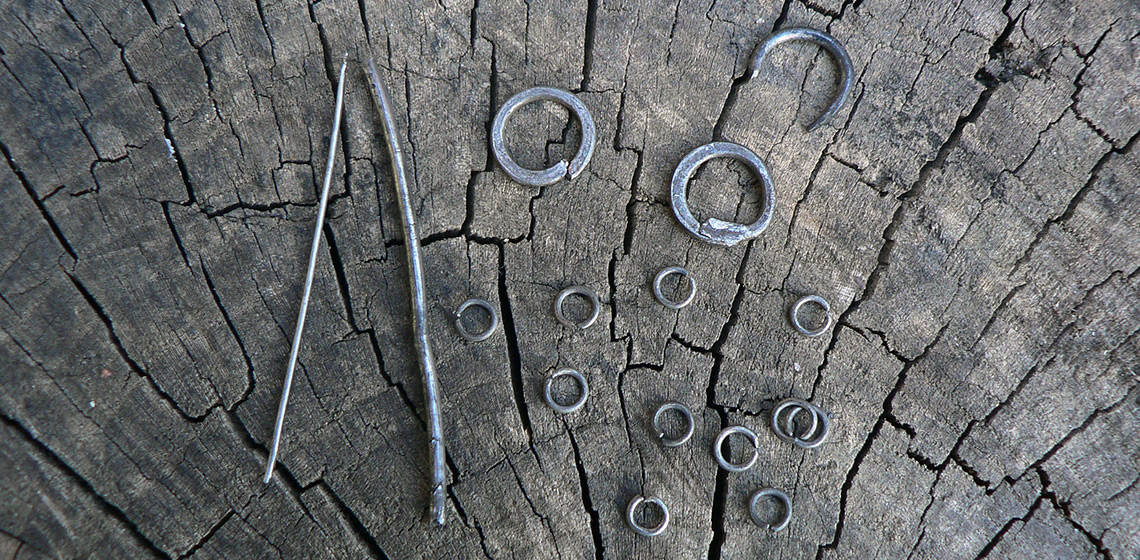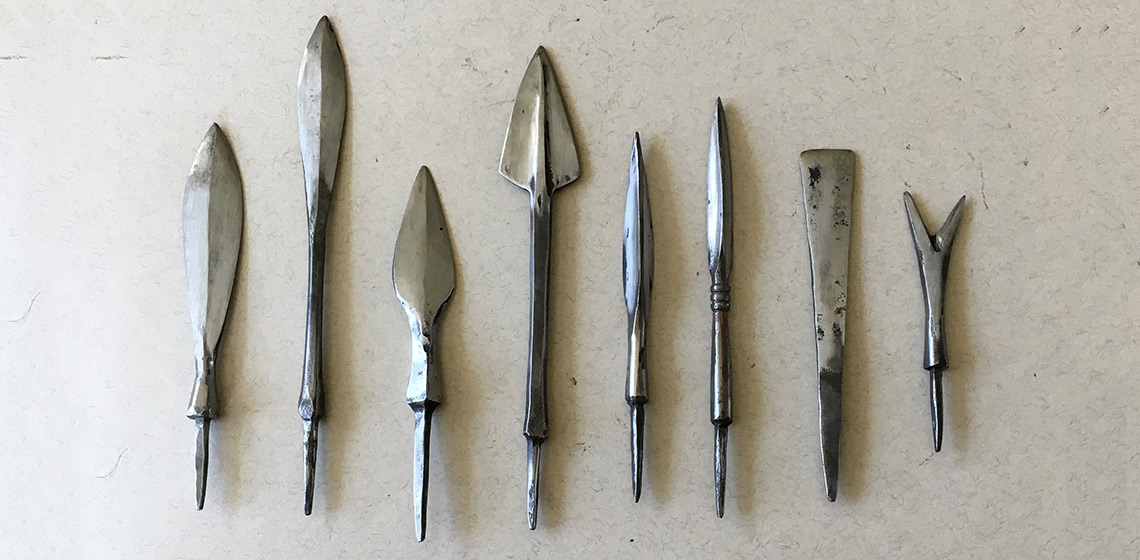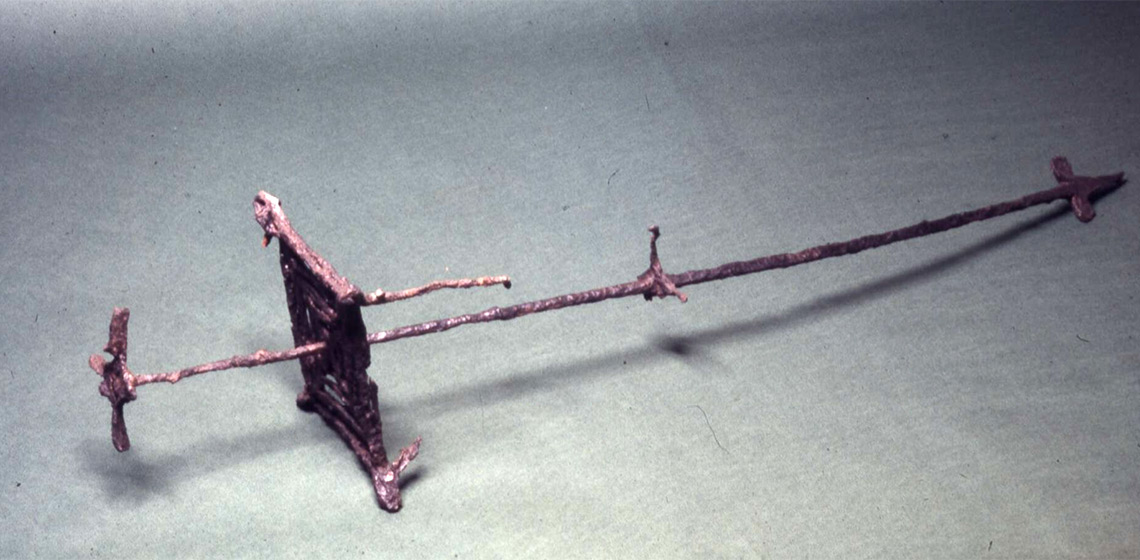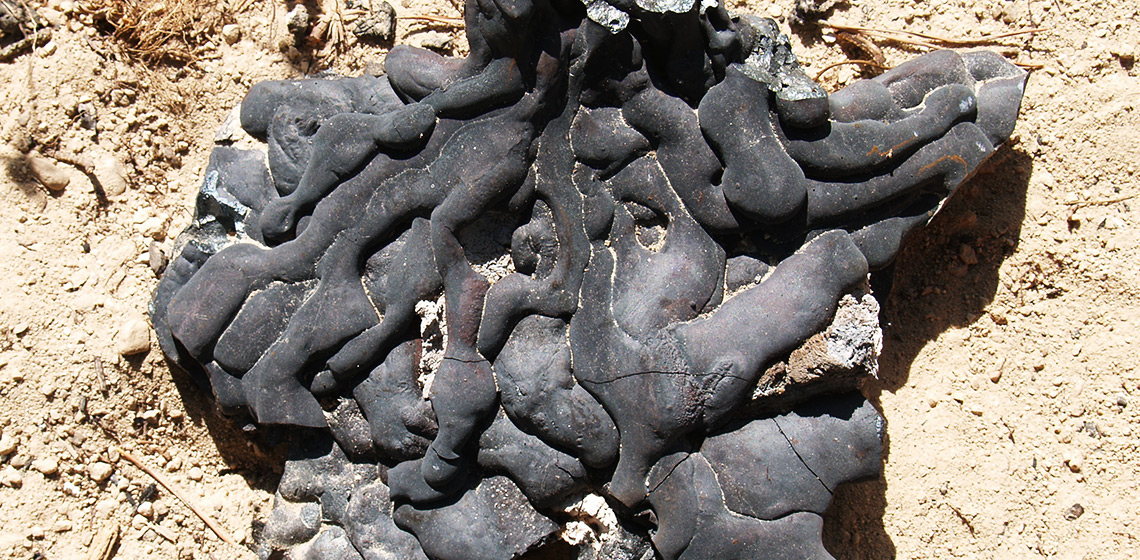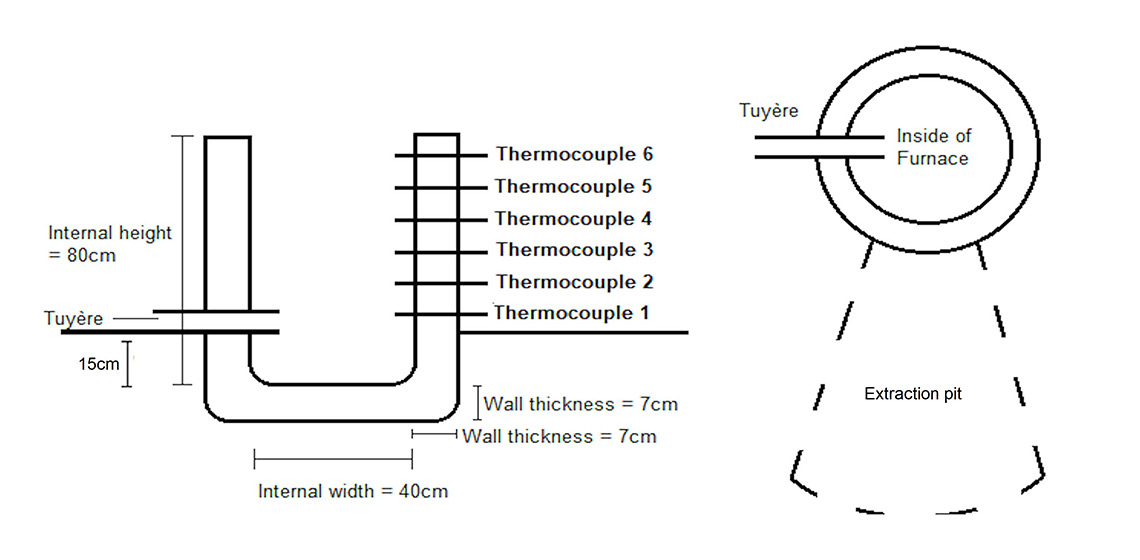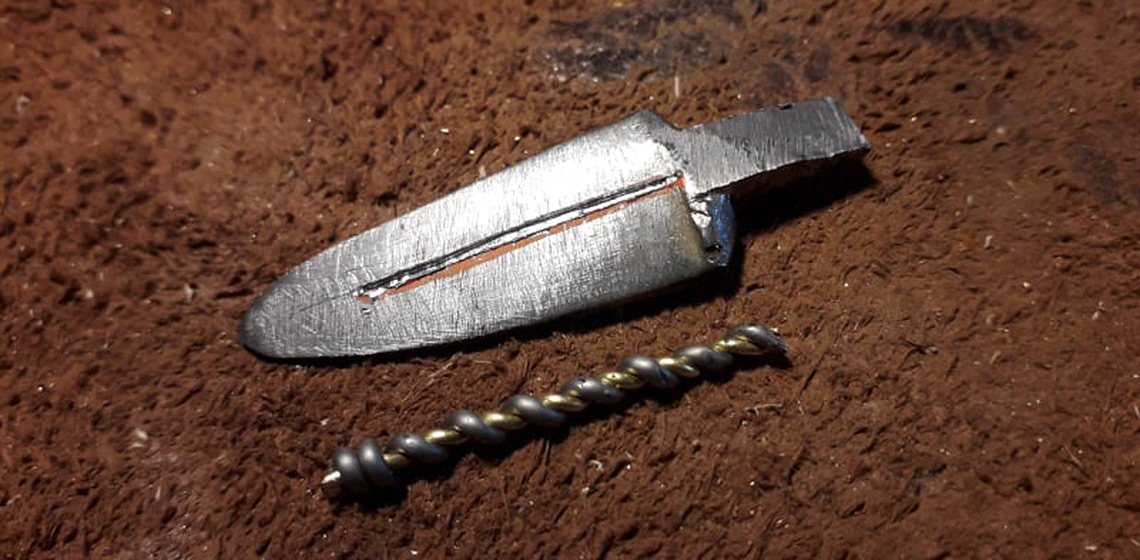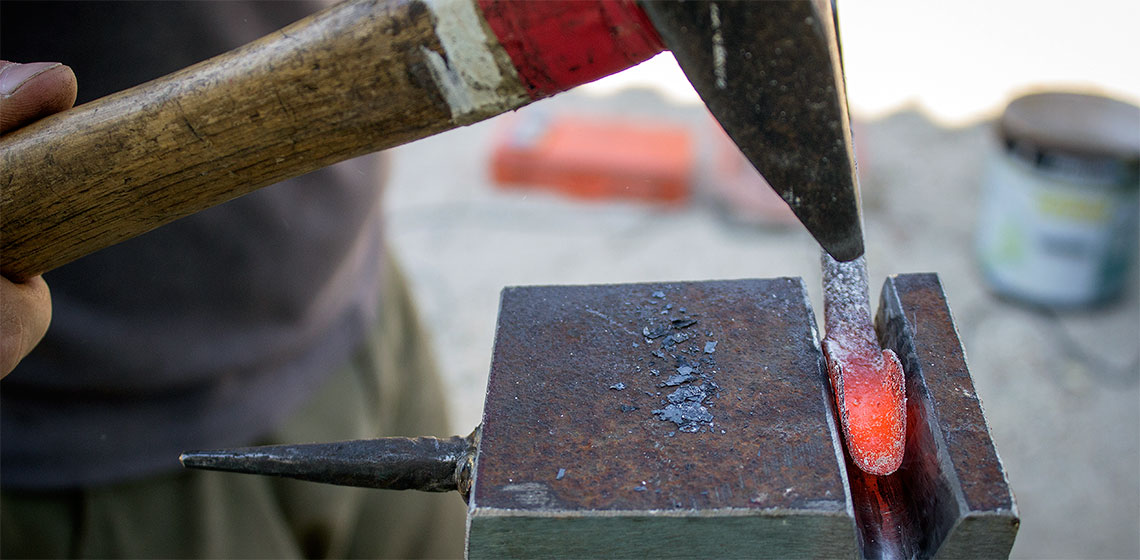The Making of Roman Metal Ink Pen Nibs
Roman Bronze Ink Pen Nibs
Introduction
The main objective of this research was to establish the amount of time taken and the material lost to manufacture Roman pen nibs made for copper alloy and additionally iron. The original copper alloy ink pen nib being reconstructed for this set of experiments was published by Rees (1979, p.179c).
The original iron ink pen nib was published by Birley (1994).
Production parameters

